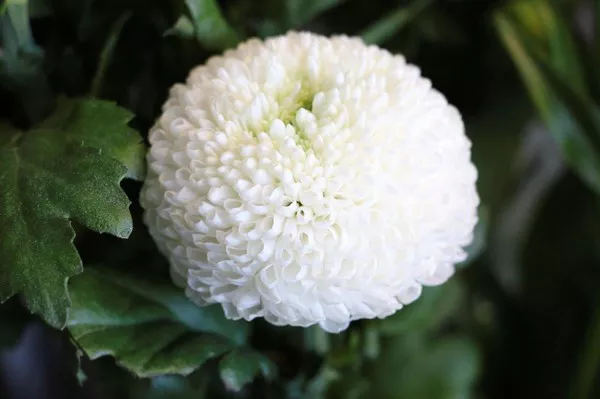Flowers, with their vibrant colors and captivating fragrances, have always held a special place in human culture. Among the myriad of flower varieties, one category that stands out for its unique charm is fluffy white flowers. These ethereal blooms exude an air of elegance and purity that has captivated botanists, garden enthusiasts, and artists alike. In this article, we delve into the world of these delicate wonders, exploring their various species, characteristics, and cultural significance.
1. The Allure of Fluffy White Flowers
Fluffy white flowers are renowned for their soft, delicate appearance, often resembling downy clouds drifting across the sky. Their petals, whether small and intricate or large and billowy, create an enchanting visual effect that is both soothing and inviting. This distinctive characteristic has made them a popular choice for various occasions, from weddings to funerals, symbolizing purity, innocence, and new beginnings.
2. Common Species of Fluffy White Flowers
Several species of fluffy white flowers grace our gardens, parks, and natural landscapes. One of the most iconic examples is the gardenia (Gardenia jasminoides), a fragrant evergreen shrub that produces elegant, creamy-white blossoms. Gardenias are renowned for their sweet aroma and are often associated with love and sincerity.
Another beloved member of the fluffy white flower family is the peonies (Paeonia), which come in various colors but are cherished for their pristine white blooms. Peonies symbolize prosperity, good fortune, and a happy marriage, making them a popular choice for bridal bouquets and garden decoration.
Cherry blossoms (Prunus serrulata) are yet another entrancing example of fluffy white flowers. These delicate blossoms are a symbol of the transience of life in Japanese culture, where they are celebrated during the annual Hanami festival. Cherry blossoms’ short-lived beauty serves as a poignant reminder of the fleeting nature of existence.
Some popular choices for white-flowering plants include hydrangeas, known for their lush, globe-like blooms, and the elegant calla lily (Zantedeschia aethiopica), with its distinctive, trumpet-shaped flowers. Additionally, baby’s breath (Gypsophila paniculata) is a delicate and airy filler flower often used in floral arrangements to complement other blooms.
3. Fluffy White Flowers in Art and Literature
Throughout history, artists and writers have drawn inspiration from the enchanting beauty of fluffy white flowers. These blooms have appeared in countless paintings, poems, and novels, often serving as symbols of purity, hope, and renewal.
One of the most iconic representations of fluffy white flowers in art is Claude Monet’s series of water lily paintings. Monet’s masterful use of color and light captures the tranquil essence of these blooms, inviting viewers to immerse themselves in the serenity of nature.
In literature, authors have used fluffy white flowers to evoke a sense of innocence and wonder. In Lewis Carroll’s “Alice’s Adventures in Wonderland,” the protagonist encounters a garden of singing, talking flowers, including the white rose, which playfully engages with Alice, adding to the whimsy of her journey.
3. Cultural Significance of Fluffy White Flowers
Across different cultures, fluffy white flowers hold unique symbolic meanings. In many Western societies, they are often associated with purity, innocence, and new beginnings, making them a popular choice for wedding ceremonies and baptisms.
In Asian cultures, white flowers, such as the white chrysanthemum in China and the white lotus in Buddhism, symbolize purity, enlightenment, and spiritual awakening. These flowers are often used in religious rituals and ceremonies.
Native American cultures have their interpretations of white flowers as well. For instance, the white sage (Salvia apiana) is considered sacred and is used in smudging ceremonies to purify and cleanse the energy of a space or individual.
4. Environmental Benefits of Fluffy White Flowers
Beyond their aesthetic appeal and cultural significance, fluffy white flowers also offer important ecological benefits. They play a vital role in supporting pollinators such as bees and butterflies, helping to maintain biodiversity and healthy ecosystems. The nectar-rich flowers provide food for these essential insects, which, in turn, contribute to the pollination of various plants, including food crops.
Additionally, the presence of white-flowering plants can contribute to temperature regulation in urban areas. Their light-colored petals reflect sunlight, reducing heat absorption and helping to mitigate the urban heat island effect, which is particularly crucial in densely populated cities.
Conclusion
Fluffy white flowers hold a special place in the hearts of people around the world. Their soft, delicate appearance, cultural significance, and environmental contributions make them more than just beautiful garden inhabitants; they are symbols of purity, hope, and renewal. Whether gracing a wedding bouquet, adorning a painting, or simply brightening a garden, these blossoms continue to captivate and inspire, reminding us of the enduring power of nature’s beauty. So, the next time you encounter a fluffy white flower, take a moment to appreciate its timeless allure and the rich tapestry of meanings it weaves in our lives.


